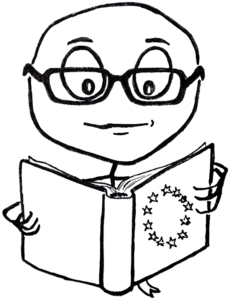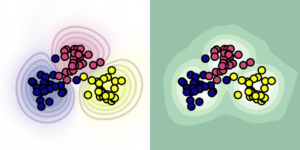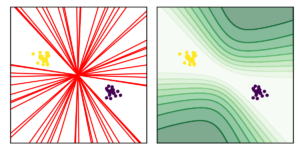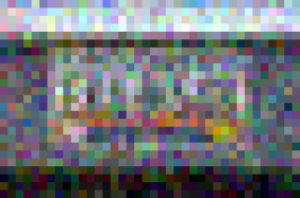Dr. Benedikt Lorch
Dr.-Ing. Benedikt Lorch
Former PhD candidate in the multimedia security group and member of the research training group Cybercrime and Forensic Computing, now with University of Innsbruck. My research interests include image forensics, computer vision, and machine learning.
Recent projects
Compliance challenges in forensic image analysis under the artificial intelligence act (EUSIPCO 2022)

In many applications of forensic image analysis, state-of-the-art results are nowadays achieved with AI methods. However, concerns about their reliability and opaqueness raise the question whether such methods can be used in criminal investigations from a legal perspective. In April 2021, the European Commission proposed the artificial intelligence act, a regulatory framework for the trustworthy use of AI. Under the draft AI act, high-risk AI systems for use in law enforcement are permitted but subject to compliance with mandatory requirements. In this paper, we summarize the mandatory requirements for high-risk AI systems and discuss these requirements in light of two forensic applications, license plate recognition and deep fake detection. The goal of this work is to raise awareness of the upcoming legal requirements and to point out avenues for future research.
Reliable camera model identification using sparse Gaussian processes (IEEE SPL 2021)

Identifying the model of a camera that has captured an image can be an important task in criminal investigations. Many methods assume that the image under analysis originates from a given set of known camera models. In practice, however, a photo can come from an unknown camera model, or its appearance could have been altered by unknown post-processing. In such a case, forensic detectors are prone to fail silently.
One way to mitigate silent failures is to use a rejection mechanism for unknown examples. In this work, we propose Gaussian processes (GPs), which intrinsically provide such a rejection mechanism. This makes GPs a potentially powerful tool in multimedia forensics, where forensic analysts regularly work on images from unknown origins.
Reliable JPEG forensics via model uncertainty (IEEE WIFS 2020)

Many methods in image forensics are sensitive to varying amounts of JPEG compression. To mitigate this issue, it is either possible to a) build detectors that better generalize to unknown JPEG settings, or to b) train multiple detectors, where each is specialized to a narrow range of JPEG qualities. While the first approach is currently an open challenge, the second approach may silently fail, even for only slight mismatches in training and testing distributions. To alleviate this challenge, we propose a forensic detector that is able to express uncertainty in its predictions. This allows detecting test samples for which the training distribution is not representative. The applicability of the proposed method is evaluated on the task of detecting JPEG double compression.
Paper | Slides | GitHub
Image forensics from chroma wrinkles (ACM IH&MMSec 2019)

This work presents a novel artifact that can be used to fingerprint the JPEG compression library. The artifact arises from chroma subsampling in one of the most popular JPEG implementations. Due to integer rounding, every second column of the compressed chroma channel appears on average slightly brighter than its neighboring columns, which is why we call the artifact a chroma wrinkle. We theoretically derive the chroma wrinkle footprint in DCT domain, and use this footprint for detecting chroma wrinkles.
Paper | Slides | GitHub
Forensic reconstruction of severely degraded license plates (IS&T Electronic Imaging 2019)

Forensic investigations often have to contend with extremely low-quality images that can provide critical evidence. Recent work has shown that, although not visually apparent, information can be recovered from such low-resolution and degraded images. We developed a CNN-based approach to decipher the contents of low-quality images of license plates.
Paper | Slides | GitHub
Quick links
PGP
| Key ID | D7994F61EECD8C75 |
| SHA-1 Fingerprint | 1781 F23E FB55 50E6 BA75 ED4E D799 4F61 EECD 8C75 |
| Public Key | ASCII-armored |
S/MIME
| Serial Number | 11538170719656647013182884190 (25:48:26:B0:09:BB:96:F6:05:B2:49:5E) |
| SHA-1 Fingerprint | 7F:EA:AC:5F:EB:4D:D4:C5:EF:D2:29:83:62:F1:82:49:01:48:7E:35 |
| SHA-256 Fingerprint | 2F:7C:B3:3A:4B:14:CC:46:8F:A1:15:B7:C4:EC:08:60:46:35:14:2E:28:B4:01:B2:FF:98:0C:14:24:9F:5E:BA |
| Issuer | DFN-Verein Global Issuing CA < DFN-Verein Certification Authority 2 < T-TeleSec GlobalRoot Class 2 |
| Certificate | PEM / DER / TXT |
Retrieve from DFN.
Publications
2023
- Lorch, B. (2023). Reliable Machine Learning Methods in Image Forensics (Dissertation).
URL: https://nbn-resolving.org/urn:nbn:de:bvb:29-opus4-217322 - Lorch, B., Schirrmacher, F., Maier, A., & Rieß, C. (2023). On the Security of the One-and-a-Half-Class Classifier for SPAM Feature-Based Image Forensics. IEEE Transactions on Information Forensics and Security. https://doi.org/10.1109/TIFS.2023.3266168
URL: https://faui1-files.cs.fau.de/public/publications/mmsec/2023-Lorch-OSO.pdf - Schirrmacher, F., Lorch, B., Maier, A., & Riess, C. (2023). Benchmarking Probabilistic Deep Learning Methods for License Plate Recognition. IEEE Transactions on Intelligent Transportation Systems, 1-14. https://doi.org/10.1109/TITS.2023.3278533
2022
- Lorch, B., Scheler, N., & Riess, C. (2022). Compliance Challenges in Forensic Image Analysis Under the Artificial Intelligence Act. In Proceedings of the European Signal Processing Conference. Belgrade, RS.
URL: https://faui1-files.cs.fau.de/public/publications/mmsec/2022-Lorch-AIA-EUSIPCO.pdf - Maier, A., Lorch, B., & Rieß, C. (2022). Bayesian Tools for Reliable Multimedia Forensics. In IEEE (Eds.), Proceedings of the 2022 VIII International Conference on Information Technology and Nanotechnology (ITNT). Samara, RU.
URL: https://faui1-files.cs.fau.de/public/publications/mmsec/2022-Maier-BNN-ITNT.pdf - Schneider, J., Düsel, L., Lorch, B., Drafz, J., & Freiling, F. (2022). Prudent design principles for digital tampering experiments. In Elsevier (Eds.), Forensic Science International: Digital Investigation. Oxford, GB.
URL: https://www.sciencedirect.com/science/article/pii/S2666281722000038
2021
- Kaiser, P., Schirrmacher, F., Lorch, B., & Rieß, C. (2021). Learning to Decipher License Plates in Severely Degraded Images. In Pattern Recognition. ICPR International Workshops and Challenges. ICPR 2021 (pp. 544-559).
URL: https://faui1-files.cs.fau.de/public/publications/mmsec/2021-Schirrmacher-LTD.pdf - Lorch, B., Schirrmacher, F., Maier, A., & Rieß, C. (2021). Reliable Camera Model Identification Using Sparse Gaussian Processes. IEEE Signal Processing Letters, 28, 912-916. https://doi.org/10.1109/LSP.2021.3070206
URL: https://faui1-files.cs.fau.de/public/publications/mmsec/2021-Lorch-GPC.pdf - Pan, J., Maier, A., Lorch, B., & Rieß, C. (2021). Reliable Camera Model Identification Through Uncertainty Estimation. In Proceedings of the IEEE International Workshop on Biometrics and Forensics.
URL: https://faui1-files.cs.fau.de/public/publications/mmsec/2021-Pan-IWBF.pdf
2020
- Lorch, B., Maier, A., & Riess, C. (2020). Reliable JPEG Forensics via Model Uncertainty. In Proceedings of the IEEE International Workshop on Information Forensics and Security. online.
URL: https://faui1-files.cs.fau.de/public/publications/mmsec/2020-Lorch-BLR.pdf - Maier, A., Lorch, B., & Riess, C. (2020). Toward Reliable Models For Authenticating Multimedia Content: Detecting Resampling Artifacts With Bayesian Neural Networks. In Proceedings of the IEEE International Conference on Image Processing (pp. 1251 - 1255).
URL: https://faui1-files.cs.fau.de/public/publications/mmsec/2020-Maier-BNN.pdf - Schirrmacher, F., Lorch, B., Stimpel, B., Köhler, T., & Riess, C. (2020). SR²: Super-Resolution With Structure-Aware Reconstruction. In Proceedings of the 2020 IEEE International Conference on Image Processing (ICIP) (pp. 533-537). Online.
URL: https://faui1-files.cs.fau.de/public/publications/mmsec/2020-Schirrmacher-SR2.pdf
2019
- Lorch, B., Agarwal, S., & Farid, H. (2019). Forensic Reconstruction of Severely Degraded License Plates. In Society for Imaging Science & Technology (Eds.), Electronic Imaging. Burlingame, CA, US.
URL: https://faui1-files.cs.fau.de/public/publications/mmsec/2019-Lorch-LP.pdf - Lorch, B., & Riess, C. (2019). Image Forensics from Chroma Subsampling of High-Quality JPEG Images. In Proceedings of the ACM Workshop on Information Hiding and Multimedia Security. Paris, FR.
URL: https://faui1-files.cs.fau.de/public/publications/mmsec/2019-Lorch-IFC.pdf
2017
- Lorch, B., Vaillant, G., Baumgartner, C., Bai, W., Rueckert, D., & Maier, A. (2017). Automated Detection of Motion Artefacts in MR Imaging Using Decision Forests. Journal of Medical Engineering, 2017. https://doi.org/10.1155/2017/4501647
2015
- Lorch, B., Berger, M., Hornegger, J., & Maier, A. (2015). Projection and Reconstruction-Based Noise Filtering Methods in Cone Beam CT. In Bildverarbeitung für die Medizin 2015 (pp. 59-64). Lübeck.
URL: https://www5.informatik.uni-erlangen.de/Forschung/Publikationen/2015/Lorch15-PAR.pdf - Mullan, P., Kanzler, C., Lorch, B., Schroeder, L., Winkler, L., Larissa, L.,... Pasluosta, C.F. (2015). Unobtrusive Heart Rate Estimation during Physical Exercise using Photoplethysmographic and Acceleration Data. In 37th Annual International Conference of the IEEE Engineering in Medicine and Biology Society EMBC ’15. Milano.
